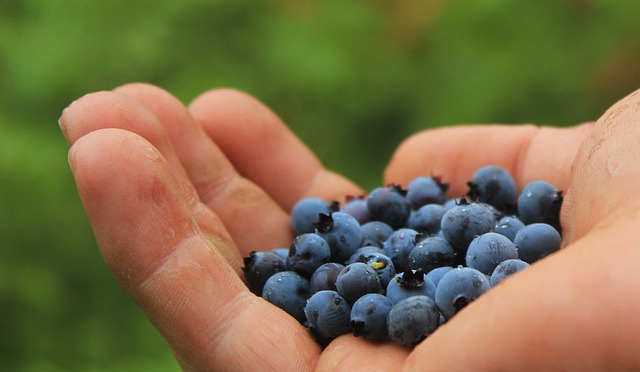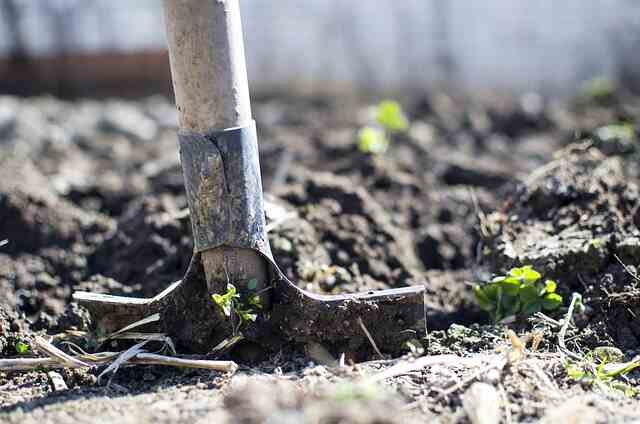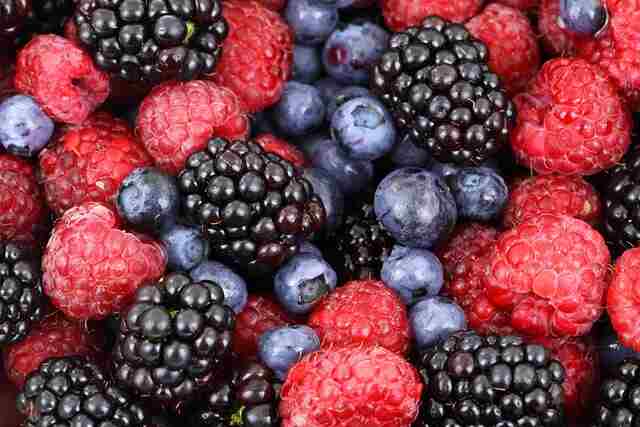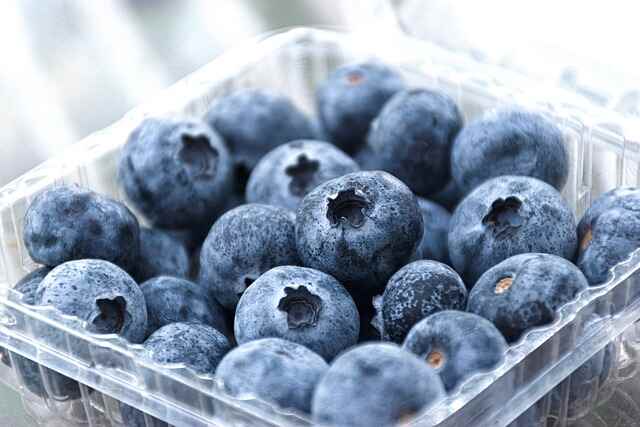Have you ever tasted a sweet, juicy wild berry straight from the wild? There’s nothing quite like it.
Harvesting wild berries is not only a fun outdoor activity, but it also provides a delicious and healthy addition to your diet.
Whether you’re a seasoned forager or a newbie, this guide will give you all the tips and tricks you need to successfully harvest your own wild berries. So grab your bucket and let’s get started!
Benefits of harvesting wild berries
Harvesting wild berries can provide several benefits, including:
Nutritional value
Wild berries are often rich in vitamins, minerals, and antioxidants, making them a great addition to a healthy diet. They can also provide a natural source of energy and help boost the immune system.
Cost-effective
Harvesting wild berries is a cost-effective way to obtain fresh produce. Unlike store-bought berries, which can be expensive and often have a short shelf life, wild berries can be harvested for free and enjoyed immediately or preserved for later use.
Connection to nature
Harvesting wild berries can provide an opportunity to connect with nature and appreciate the beauty of the outdoors. It is also a fun activity to do with your friends or family.
Sustainability
By harvesting wild berries, you can help reduce food waste and promote sustainability. Rather than letting the berries go to waste, you can use them to make jams, jellies, and other preserves.
Culinary uses
Wild berries can be used in a variety of culinary dishes, from pies and tarts to smoothies and salads. They can add a unique and delicious flavor to any meal.
Economic benefits
In some regions, wild berries can be a valuable commodity that can be sold or used to create local products, such as jams or wines. This can provide economic benefits to individuals and communities.
Identify the Types of Wild Berries

Identifying the types of wild berries is important for several reasons. First, many wild berries are edible and can be a source of nutrition for humans and wildlife. However, there are also many poisonous berries that can cause serious illness or even death if ingested. Therefore, it is important to be able to distinguish between the different types of berries in order to know which ones are safe to eat and which ones should be avoided.
Secondly, identifying wild berries can also be important for conservation purposes. Some wild berry species may be endangered or threatened, and knowing how to identify them can help conservationists to monitor and protect these important plants.
To identify the types of wild berries, there are several key characteristics to look for. These include:
Shape and color
Wild berries come in a variety of shapes and colors, ranging from round and red to oblong and purple. Observing these physical characteristics can be helpful in identifying the type of berry.
Leaves and stems
The leaves and stems of wild berry plants can also provide clues to their identity. Some berries, such as blackberries and raspberries, have thorny stems, while others, like blueberries, have smooth ones. Leaf shape, color, and texture can also be useful in identification.
Growth habit
The way that wild berry plants grow can also be helpful in identification. Some berries grow on bushes, while others grow on vines or low to the ground.
Taste and smell
Finally, tasting or smelling a wild berry can be a useful way to identify it. However, it is important to only taste a small amount and be absolutely certain of its identity before consuming it.
It is important to note that while these characteristics can be helpful in identifying wild berries, it is always best to consult with an expert or use a field guide to confirm the identity of a wild berry before consuming it.
Choose the Right Time to Harvest
Harvesting wild berries at the right time is essential to ensure that they are at their peak flavor and nutritional value. Picking berries too early or too late can result in a less enjoyable eating experience, as the berries may be too sour, too tart, or even moldy. In addition, picking berries at the wrong time can harm the plant and reduce the yield for future harvests.
The proper time for different berries
The timing for harvesting wild berries varies depending on the type of berry. Here are some general guidelines:
- Strawberries: Harvest when the fruit is fully red and has a sweet aroma. The flesh should be firm but yield slightly to pressure.
- Raspberries: Harvest when the fruit is fully red and separates easily from the plant. The ripe berries are generally plump and slightly soft.
- Blackberries: Harvest when the fruit is fully black and shiny. The berries should be plump and slightly soft.
- Blueberries: Harvest when the fruit is fully blue and has a slight white or gray haze on the surface. These berries tends to be plump and firm.
- Elderberries: Harvest when the fruit is fully dark purple and has a slightly waxy appearance. These berries should be plump and firm.
To determine when each type of berry is ripe, it’s helpful to do a taste test. Sample a few berries to see if they have reached the desired sweetness or tartness. You can also gently squeeze the berries to see if they are softening and becoming easier to pick.
General tips on harvesting wild berries
Here are some general tips for harvesting wild berries:
- Plan ahead and bring the right equipment, such as a container to hold the berries, gloves to protect your hands, and a hat and sunscreen to protect your skin.
- Harvest in the morning when the berries are cool and the sugar content is highest.
- Be gentle when picking the berries to avoid damaging the plant.
- Leave some berries behind to ensure that the plant can continue to produce fruit.
- Be mindful of the environment and avoid picking berries in areas that have been sprayed with pesticides or herbicides.
By harvesting wild berries at the right time and following these general tips, you can enjoy a delicious and nutritious snack while also protecting the health of the plants and the environment.
Gather Your Equipment

Harvesting wild berries requires some basic equipment to ensure that the process is efficient, safe, and respectful of the environment. Here are some essential items that are useful when harvesting wild berries, along with an explanation of why each piece of equipment is important:
- Containers: Containers are necessary for holding the harvested berries. They can be made of various materials, such as plastic, metal, or cloth. The size of the container depends on how much you plan to harvest, but it’s important to have enough room to prevent the berries from getting crushed or damaged.
- Gloves: Gloves are important for protecting your hands from thorns, prickles, and other hazards that are common in the wild. They can also help prevent cuts and scratches that can occur when picking berries.
- Pruners or scissors: Pruners or scissors can be useful for cutting branches or stems to reach the berries that are higher up or harder to reach. They can also help you avoid damaging the plant when harvesting.
- Sunscreen and hat: When harvesting wild berries, it’s important to protect your skin from the sun. Wearing a hat and applying sunscreen can help prevent sunburn and other skin damage.
- Water and snacks: It’s important to stay hydrated and fueled during the harvesting process, especially if you plan to spend several hours in the wild. Bringing water and snacks can help you maintain your energy and focus.
Each piece of equipment plays a crucial role in making the berry-picking process more efficient and safe. Containers keep the berries organized and prevent them from getting damaged.
Gloves protect your hands from hazards that can be found in the wild. Pruners or scissors make it easier to access the berries that are harder to reach, and help you avoid damaging the plant. Sunscreen and a hat protect your skin from the sun’s harmful rays, while water and snacks help you stay hydrated and fueled. By using the right equipment, you can ensure a successful and enjoyable berry picking experience.
Find a Good Spot to Harvest
Locating a good spot for harvesting wild berries is crucial for a successful and enjoyable experience. Here are some tips for finding a good spot for berry picking:
- Research the area: Look for information online or in guidebooks about areas that are known for abundant berry growth. You should also ask to thelocals or park rangers for recommendations.
- Look for signs of berry growth: Pay attention to the types of plants and trees that are growing in the area. Berries tend to grow in areas with sunlight, moisture, and nutrient-rich soil.
- Consider accessibility: Look for areas that are easy to access, such as trails or roads that lead to the berry patches. If you plan to harvest berries in a more remote area, make sure to bring appropriate gear and supplies.
- Be mindful of your surroundings: Be aware of potential hazards in the area, such as wildlife, steep terrain, or poisonous plants. Make sure to stay on designated trails and avoid trespassing on private property.
Once you’ve located a good spot for berry picking, you may encounter some hard-to-reach areas. Here are some tips for accessing these areas:
- Wear appropriate clothing: Wear clothing that is comfortable and allows for ease of movement. Long sleeves and pants can help protect your skin from thorns and other hazards.
- Use a walking stick: A walking stick can help you maintain your balance and provide support when navigating steep or uneven terrain.
- Bring a ladder: If you’re picking berries from trees, bring a ladder that is sturdy and easy to move around. Make sure to use the ladder safely and securely.
- Ask for help: If you’re harvesting berries in a group, consider working together to access hard-to-reach areas. You can also ask for help from park rangers or other professionals who are trained in outdoor safety.
Make sure to stay mindful while harvesting is important to ensure sustainable agriculture. It allows farmers to preserve the ecosystem and protect natural resources while also maintaining high crop yields.
Mindful harvesting practices can reduce soil degradation, conserve water, and minimize the use of pesticides and fertilizers, contributing to the long-term health and productivity of agricultural lands.
Harvest the Berries

here’s a guide on how to properly harvest different types of berries and avoid damaging the plants:
Strawberries
- Pick strawberries when they are fully red and ripe.
- Grasp the stem above the fruit and gently twist and pull it off the plant.
- Avoid pulling the fruit itself, as this can damage the plant.
- Be careful not to step on or crush the plants when harvesting.
Blueberries
- Wait until the berries are a dark blue color and easily come off the plant when touched.
- Hold the branch with one hand and gently use the other hand to pick the berries.
- Be careful not to pull the entire branch or break off the stem.
- Avoid squishing or stepping on the plants when harvesting.
Raspberries
- Pick raspberries when they are fully ripe and easily come off the plant when touched.
- Gently grasp the berry between your thumb and forefinger and pull it off the plant.
- Avoid squeezing the fruit too hard or pulling too aggressively, as this can damage the plant.
- Be careful not to step on or damage the canes of the raspberry plant when harvesting.
Blackberries
- Wait until the blackberries are fully ripe and easily come off the plant when touched.
- Grasp the fruit gently and twist it off the plant.
- Avoid pulling too hard or squeezing the fruit, as this can damage the plant.
- Be careful not to step on or damage the canes of the blackberry plant when harvesting.
Tips to avoid damaging the plants
- Use clean hands and gently handle the plants to avoid bruising or damaging them.
- Don’t overcrowd the plants when harvesting, as this can cause the branches to break.
- Avoid harvesting in wet conditions, as this can damage the fruit and the plants.
- Only pick the ripe fruit, leaving unripe fruit to mature and be harvested at a later time.
- Don’t step on or crush the plants while harvesting. Instead, move carefully around them.
- Avoid using sharp tools or scissors to harvest berries, as this can damage the plants.
some common mistakes to avoid while harvesting wild berries
here are some common mistakes to avoid while harvesting wild berries:
Not properly identifying the berries:
- It’s important to properly identify the berries you are harvesting to avoid picking toxic or poisonous berries.
- Use a guidebook or a knowledgeable person to help you identify the different types of berries.
Harvesting too early or too late:
- Harvesting the berries too early means they won’t be fully ripe and may not have the best flavor.
- Harvesting the berries too late may result in overripe fruit that is past its prime.
Over-harvesting:
- It’s important to only take what you need and not over-harvest the berries.
- Over-harvesting can deplete the plant’s resources and affect future berry production.
- Harvesting from contaminated areas:
- Avoid harvesting berries from areas that may be contaminated with chemicals or other pollutants.
- Check for any signs of pollution or contamination before harvesting.
Not respecting the environment:
- Be respectful of the environment and the ecosystem when harvesting wild berries.
- Don’t damage the plants or surrounding area when harvesting.
- Don’t leave any trash or litter behind.
Not wearing protective clothing:
- Wear protective clothing, such as long pants and sleeves, to protect yourself from scratches and bites from insects or animals that may be in the area.
Not washing the berries:
- Always wash the berries before eating or using them in recipes to remove any dirt, debris, or potential contaminants.
By avoiding these common mistakes, you can ensure a safe and enjoyable wild berry harvesting experience.
Store and Use Your Berries

Storing and using berries is a fairly simple process. Here are some tips:
Choose ripe, fresh berries
When buying berries, make sure to choose ones that are ripe and fresh. Look for bright colors, firmness, and a plump appearance.
Wash berries carefully
Before storing or using berries, you should wash them carefully. To do this, rinse them under cold water and gently pat them dry with a paper towel.
Store berries properly
Berries are delicate and can spoil quickly if not stored properly. To keep them fresh, store them in a clean, dry container with a lid. If possible, line the container with paper towels to absorb any moisture. You can store berries in the fridge for up to a week,but try to use them as soon as possible.
Use berries in recipes
Berries are great for adding flavor and nutrition to a variety of recipes. You can use them in smoothies, salads, desserts, or even as a topping for oatmeal or yogurt.
Freeze berries for later
If you have more berries than you can use, you can freeze them for later. To do this, wash the berries and pat them dry, then spread them out on a baking sheet in a single layer. Freeze the berries for a few hours, then transfer them to a freezer-safe container. Frozen berries can be used for smoothies, baked goods, or as a topping for ice cream.
Conclusion
Harvesting wild berries can be a fun and rewarding experience, but it’s important to do it safely and responsibly. Always make sure you are allowed to harvest in the area you’re in, and take care not to damage the environment or harm the plants.
Be sure to bring the right tools, wear appropriate clothing, and follow best practices for picking and storing the berries. With a little bit of preparation and care, you can enjoy the delicious taste and health benefits of wild berries while also preserving the natural ecosystem.
Happy harvesting!
You may also like to read
A Gardener’s Dream: Bachelor’s Button and Its Low-Maintenance Care
Spice Up Your Garden: Creative Tips for Using Culinary Herbs as Ground Cover






